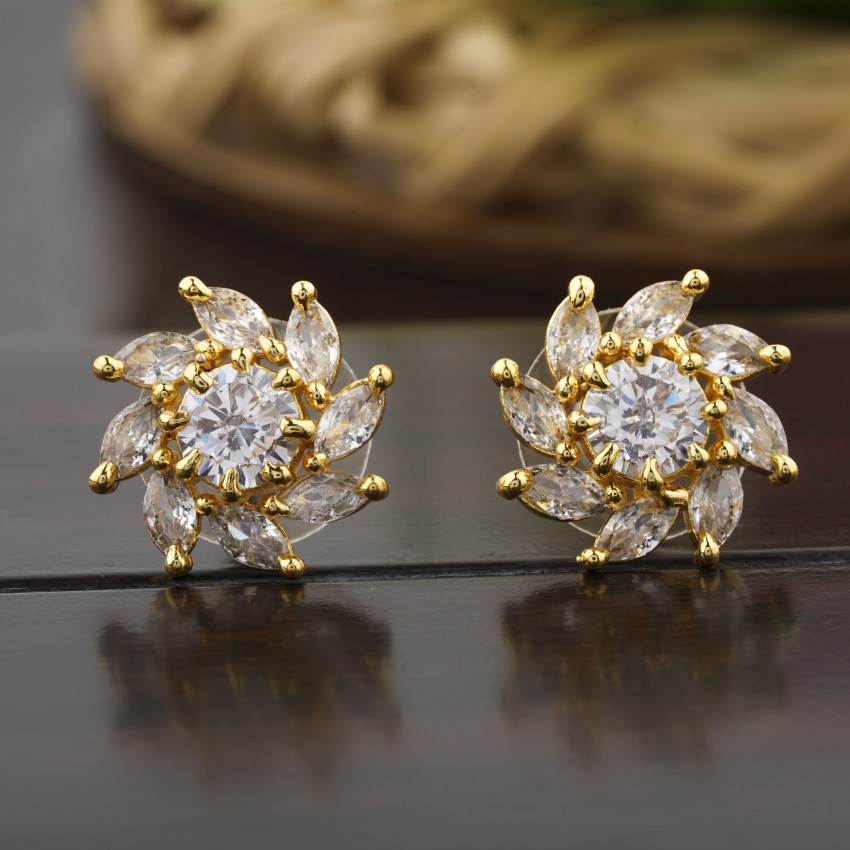When shopping for a lab grown diamond, understanding the 4Cs is essential to ensuring you choose the perfect stone. Just like natural diamonds, lab grown diamonds are graded based on Cut, Color, Clarity, and Carat weight. These factors determine the overall quality and value of the diamond. This article will help you understand each of the 4Cs in relation to lab grown diamonds and why they are important when making your purchase.
Table of Contents
What Are Lab Grown Diamonds?
Lab grown diamonds, also known as synthetic diamonds or cultured diamonds, are diamonds that are created in a laboratory setting using advanced technological processes. These diamonds are made from carbon atoms, just like natural diamonds, and share the same physical, chemical, and optical properties. The primary difference is that lab grown diamonds are created in a controlled environment rather than being formed deep within the Earth.
As with natural diamonds, the quality of lab grown diamonds is graded using the 4Cs. Understanding the 4Cs of lab grown diamonds will help you make an informed decision and choose the stone that best suits your preferences and budget. The following sections break down each of the 4Cs in more detail.
The Importance of Cut in Lab Grown Diamonds
The first and most important of the 4Cs is the cut. The cut of a diamond refers to how well the diamond has been shaped and faceted. It affects the diamond’s ability to reflect light, which directly influences its sparkle and brilliance. The better the cut, the more light the diamond will reflect, creating that signature sparkle that is highly coveted in diamonds.
When it comes to lab grown diamonds 4Cs, the cut is critical because it can have a greater impact on the diamond’s appearance than other factors such as color or clarity. A well-cut lab grown diamond will look stunning, regardless of its other characteristics. Lab grown diamonds are cut into many different shapes, including round, princess, cushion, and oval. Each shape can affect how light is reflected within the diamond, so it’s important to consider which shape complements your preferences and the overall design of your jewelry.
Understanding Color in Lab Grown Diamonds
The color of a diamond is another key factor in its grading, and it applies equally to lab grown diamonds. Color is graded on a scale from D (colorless) to Z (light yellow or brown). The more colorless a diamond is, the more valuable and desirable it generally is. The presence of yellow or brown hues can diminish a diamond’s brilliance, making it less appealing.
When comparing lab grown diamonds 4Cs, it’s essential to focus on the diamond’s color grade. While lab grown diamonds can be created in a range of colors, colorless diamonds (graded D-F) are usually considered the highest quality. However, lab grown diamonds with slightly lower color grades (G-H) can still be stunning and often represent a more affordable option. It’s all about balancing your preferences for color with your budget.
Clarity of Lab Grown Diamonds: What to Know
Clarity is the third C of lab grown diamonds, and it refers to the presence of internal or external imperfections, known as inclusions and blemishes. The fewer imperfections a diamond has, the higher its clarity grade. Clarity is graded on a scale from Flawless (no inclusions or blemishes visible under 10x magnification) to Included (inclusions and/or blemishes visible to the naked eye).
When considering lab grown diamonds 4Cs, clarity is important because it influences both the visual appeal and the value of the stone. Lab grown diamonds tend to have fewer inclusions than natural diamonds, thanks to their controlled creation process. This makes them a great option for those looking for a higher-quality stone at a more affordable price. However, it’s important to note that some minor inclusions in diamonds are often microscopic and won’t affect the overall beauty of the diamond, so it’s okay to compromise on clarity for a more budget-friendly stone.
Carat Weight in Lab Grown Diamonds
Carat weight is the final factor in the 4Cs grading system, and it refers to the weight of the diamond. One carat is equivalent to 200 milligrams, and diamonds are graded by their weight rather than their size. Since larger diamonds are rarer and harder to find, they are typically more expensive. Carat weight can be a significant factor in determining the price of a lab grown diamond, but it doesn’t necessarily correlate with the diamond’s appearance.
When choosing a lab grown diamond, it’s important to consider how the carat weight fits into your budget and aesthetic preferences. A lab grown diamond that is slightly under a full carat may look just as large as a one-carat diamond, thanks to the way it is cut, but it will cost significantly less. The 4Cs of lab grown diamonds provide a balanced way to compare options based on both size and value.
How the 4Cs of Lab Grown Diamonds Affect Value
The 4Cs play a significant role in determining the value of a lab grown diamond. A high-quality diamond in terms of cut, color, clarity, and carat weight will be priced accordingly. However, lab grown diamonds generally offer more value for money compared to natural diamonds, as they are less expensive to produce.
Understanding the lab grown diamonds 4Cs is essential in helping you get the best possible value for your money. For example, you may decide to prioritize a high-quality cut and a lower color grade, which could result in a beautiful diamond at a more affordable price. By learning how each of the 4Cs affects a diamond’s price, you can make a more informed decision and find a lab grown diamond that meets your budget and style preferences.
Lab Grown Diamonds 4Cs: Choosing the Right Balance
Choosing the right lab grown diamond involves finding a balance between the 4Cs that suits your personal preferences. Some people may prioritize cut above all else, seeking a diamond with the most brilliant sparkle, while others might focus on carat weight, looking for a larger stone at a more affordable price. It’s important to find the right combination of the 4Cs that works for you, as every diamond is unique.
Lab grown diamonds offer a range of possibilities to cater to your preferences. Whether you choose to focus on cut, color, clarity, or carat weight, understanding how these factors affect the overall quality of the diamond will help you select the perfect stone. By using this lab diamonds 4Cs guide, you can confidently choose a diamond that fits your style, budget, and values.
Conclusion: Mastering the Lab Grown Diamonds 4Cs
The 4Cs of lab grown diamonds—cut, color, clarity, and carat weight—are essential in determining the overall quality, appearance, and price of the diamond. By understanding these factors, you can make an informed choice when purchasing a lab grown diamond. Whether you prioritize brilliance, affordability, or size, the lab grown diamonds 4Cs provide a clear and structured way to compare different options. With this knowledge, you can confidently choose a lab grown diamond that will shine brightly for years to come.









